Submitted by WA Contents
The Slovenian Pavilion experience unites craftsmanship and technology at Venice Biennale
Italy Architecture News - Jul 01, 2025 - 04:47 5806 views
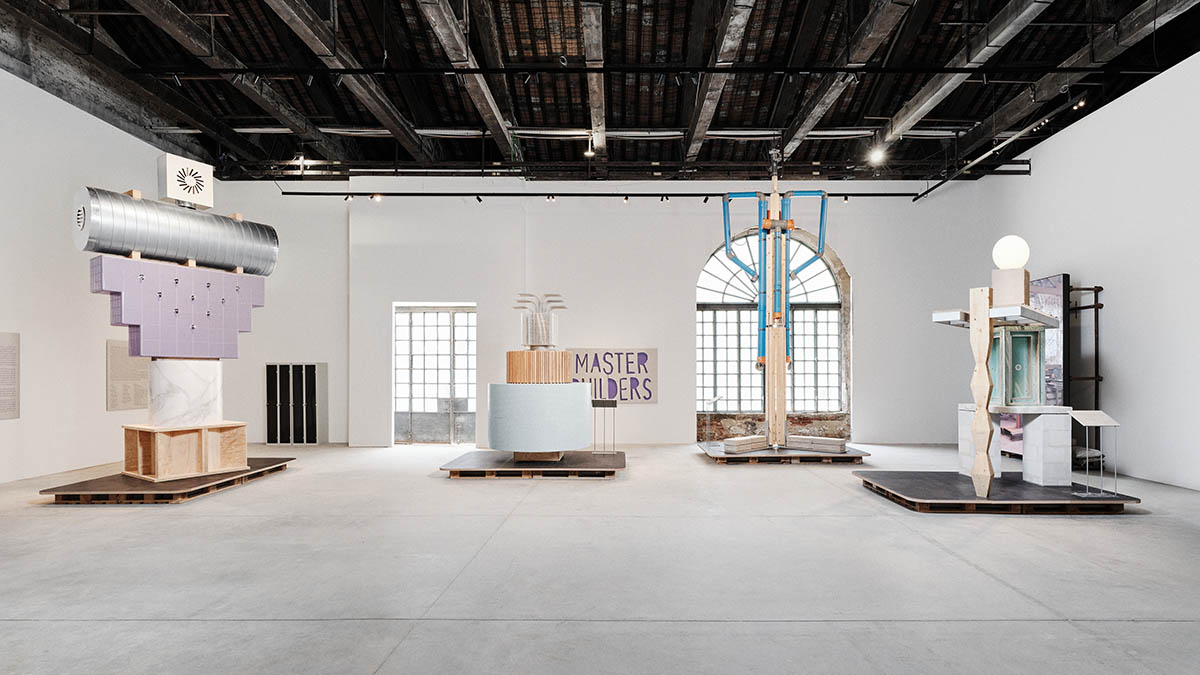
The Slovenian Pavilion presents the "Master Builders," curated by Ana Kosi and Ognen Arsov, at the 19th International Architecture Exhibition - 2025 Venice Architecture Biennale, organized by the Museum of Architecture and Design (MAO).
The Slovenian pavilion idea exposes an unanticipated paradox by addressing the evolution of construction technology, which currently incorporates robotics, prefabrication, artificial intelligence, 3D printing, and other technologies.
Even with the numerous technical advancements, the craftsmanship of the craftsmen on the construction site continues to play a significant role in the quality and development of the built environment.
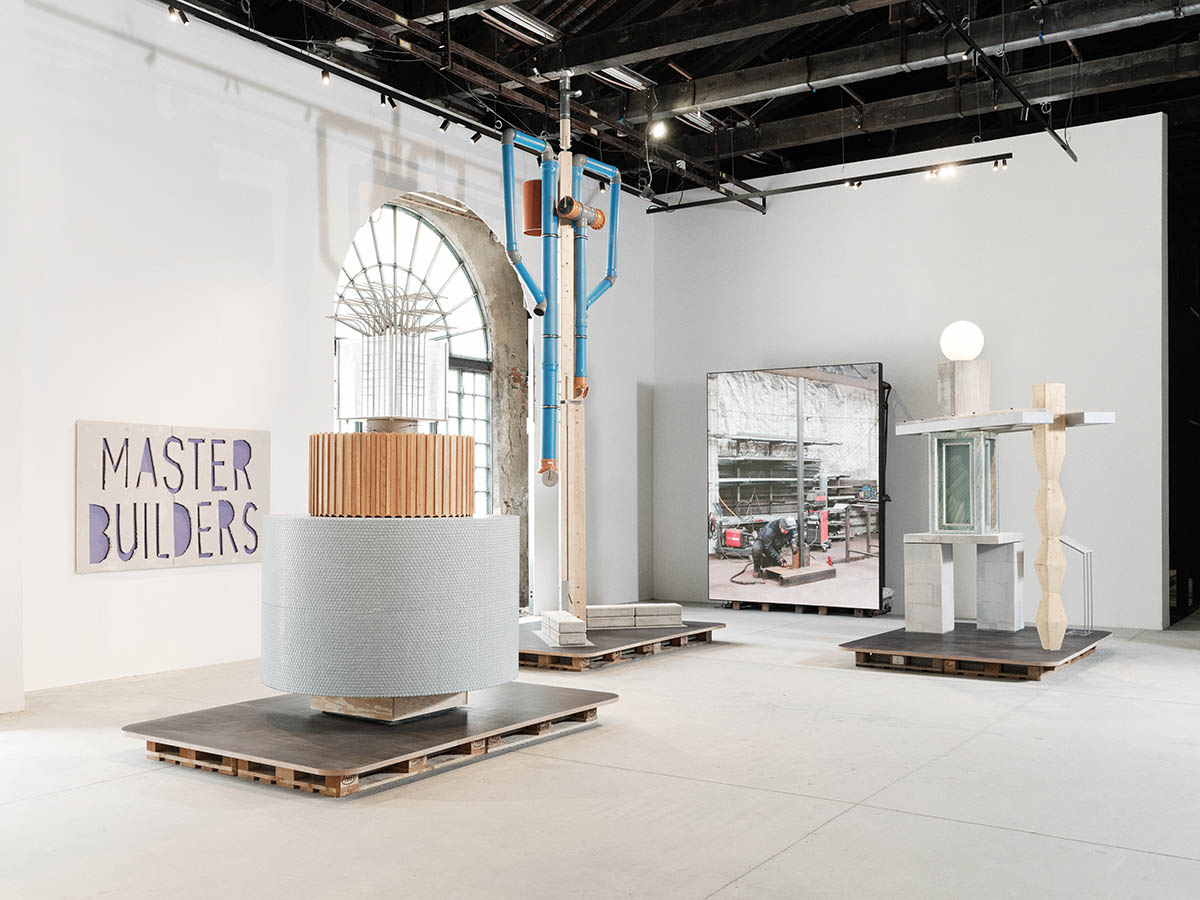
Master Builders, Photography © Klemen Ilovar, 2025
The variety of their abilities is crucial for the realization of structures since it greatly aids in converting a design into high-quality architecture. The pavilion's writers examine the link between architect, craftsman, and architecture through the process of building a number of totems.
Three components make up the Slovenian pavilion: an interdisciplinary symposium on the production of contemporary architecture in Slovenia, which will be held in November at the Museum of Architecture and Design in Ljubljana; a spatial installation in the Arsenale in Venice; and a catalogue that addresses the relationship between architect and master builder in the historical and contemporary context.
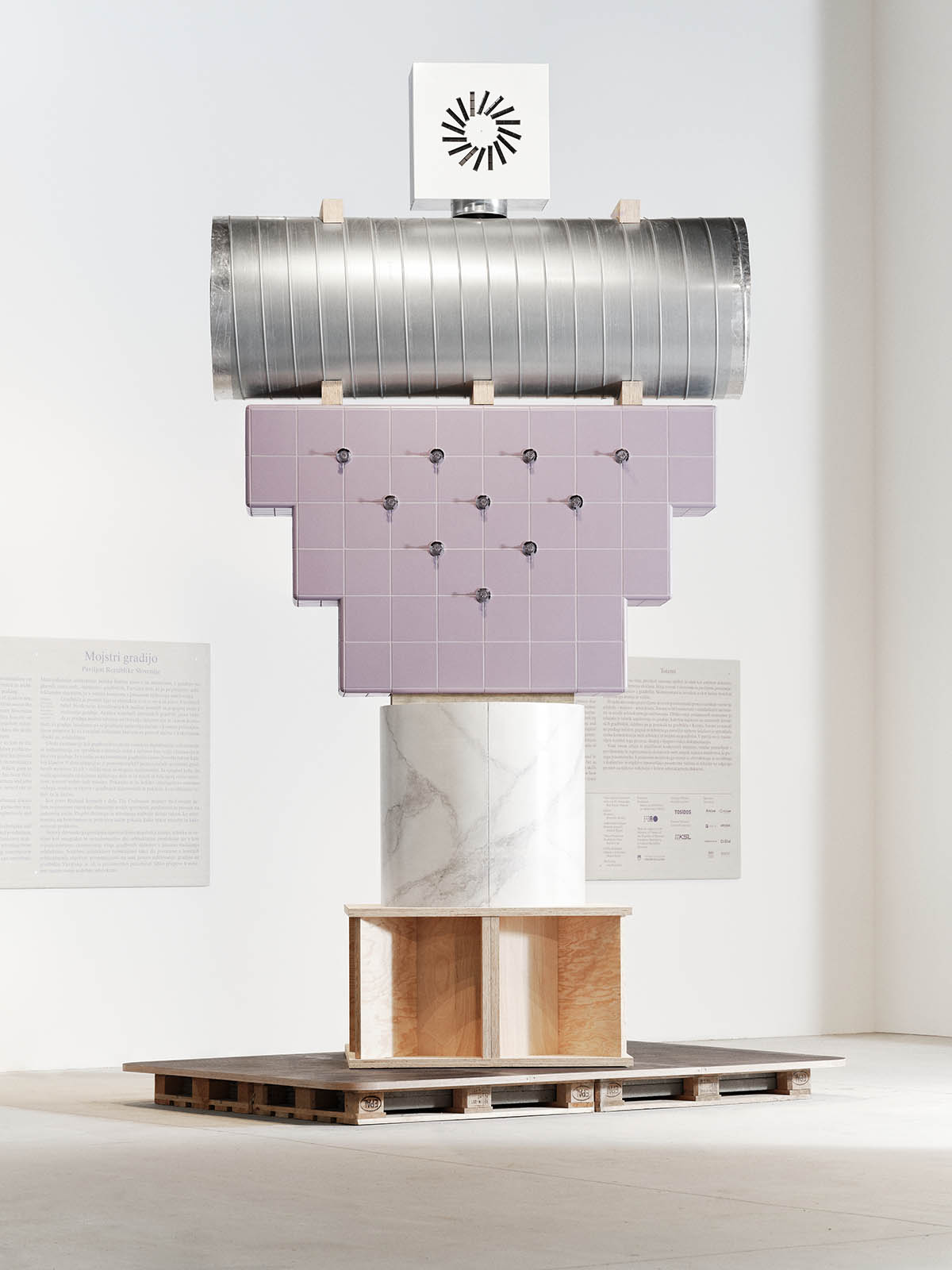
Master Builders, Photography © Klemen Ilovar, 2025
According to the pavilioni, Master represents a person who is very skilled in a particular job or activity (Cambridge Dictionary). Art, engineering, ingenuity tectonics, poetry, materiality, tactility, and mood are all elements of good architecture, on the one hand. However, it is physically manifested through building on "hard-core" construction sites, which are noisy and filthy.
Thus, there is a stark contrast between the process of creating architectural items and the ethereal atmosphere that is associated with them. Actively observing the building process is gradually becoming less and less central to the character of the modern architectural profession.
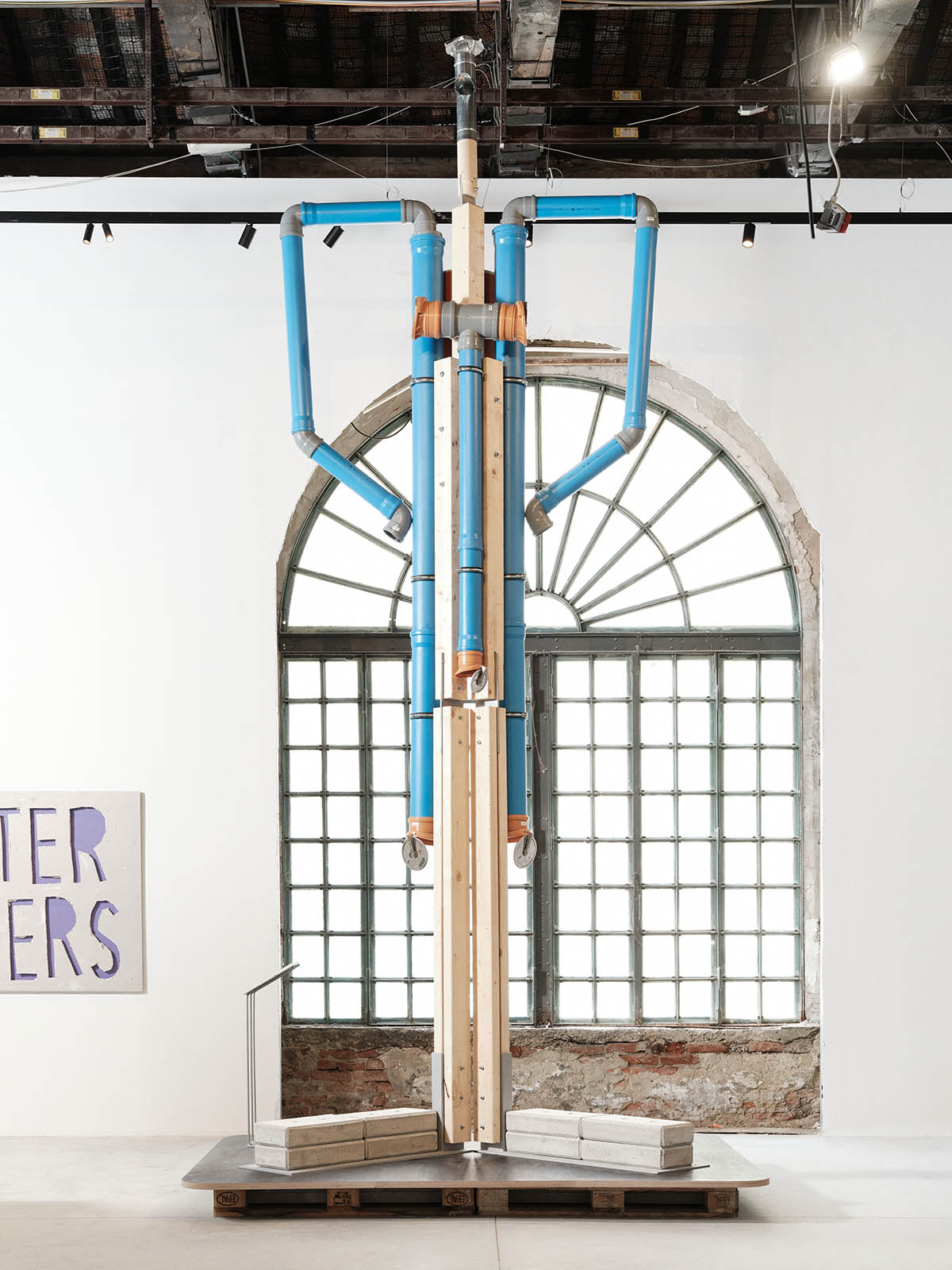
Master Builders, Photography © Klemen Ilovar, 2025
Advanced digital design tools that tend to maximize control over projects prior to construction, the growing difficulty architecture presents for intricate bureaucratic mechanisms, and the idea of architecture as a formal object without any real consideration for its technical structure are all factors in this.
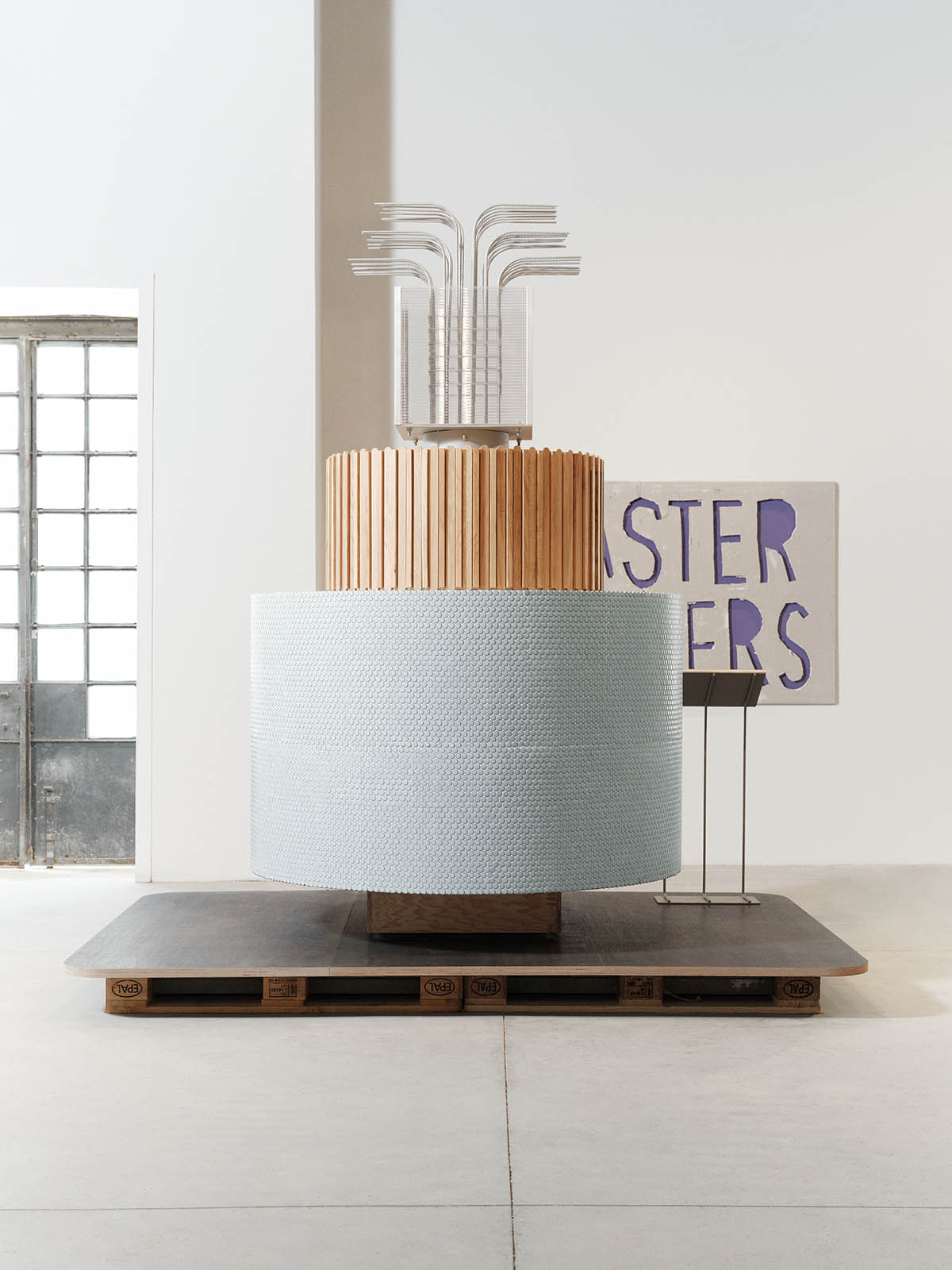
Master Builders, Photography © Klemen Ilovar, 2025
However, the fundamental nature of our profession is at odds with this artificial separation between architects and construction. The word "architect" comes from the ancient Greek word "architecton," where "tekton" means "one who builds" and "archi" means "chief" or "leading." Thus, the term "architecton" refers to the master constructor. Architects play an active role on construction sites, which is the essence of their job.
Today, a building site is a place where the physical world of construction collides with the abstract realm of ACAD or BIM, excel tables, coordination emails, tenders, and negotiations. Here, an examination of modern Slovenian construction sites shows how much human work and building expertise are used in the process. At the same time, there is a severe lack of trained artisans in the construction sector who can turn a design into a high-quality structure or piece of architecture.
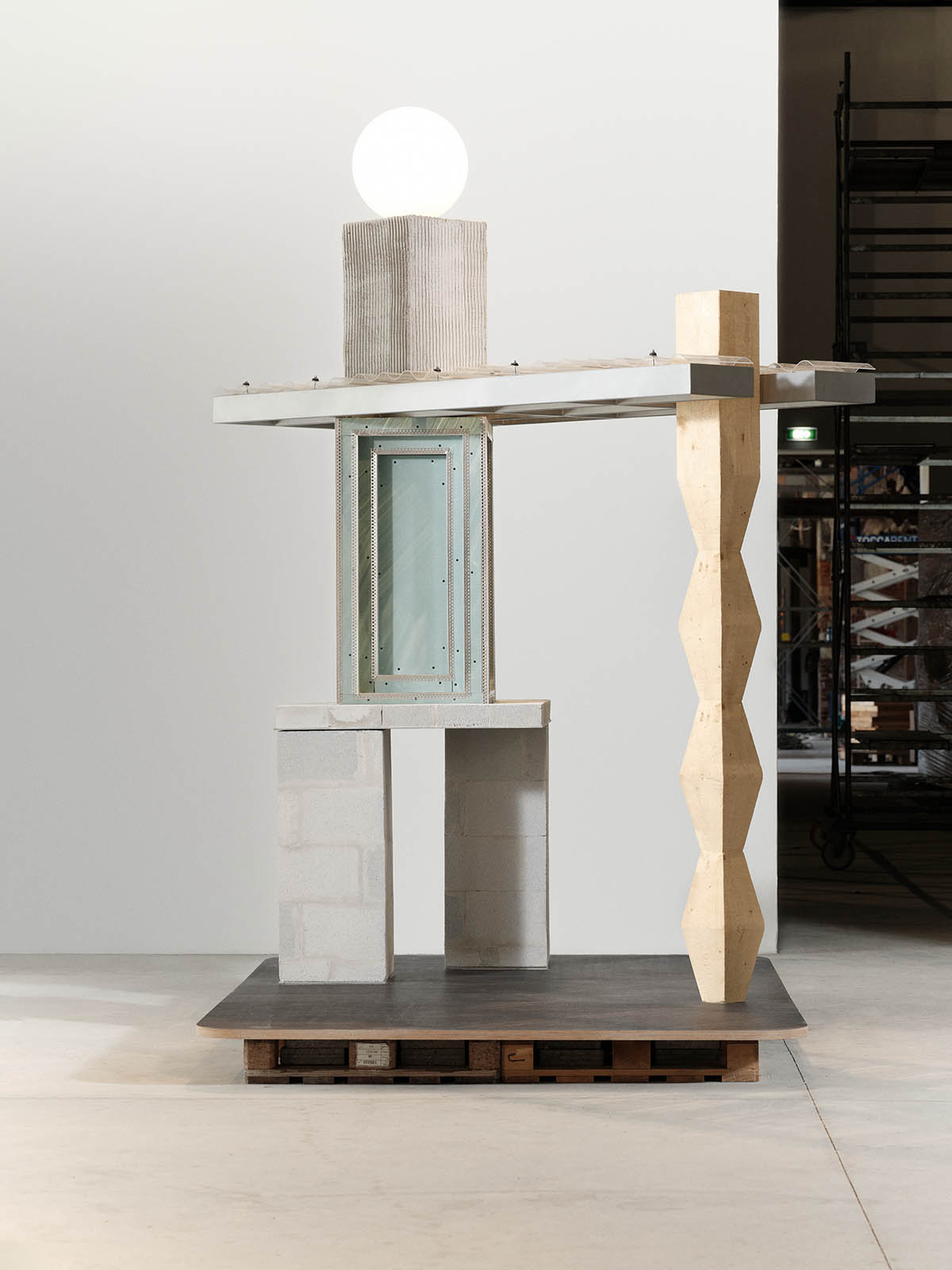
Master Builders, Photography © Klemen Ilovar, 2025
In order to solve the "labor problem" and reduce the demand for people, the construction sector is keen to follow worldwide trends toward digitization and mechanization. The ideal scenario, taken to its logical conclusion, would eliminate all undesirable human-related factors in the construction process, including inexperience and insufficient skill, reliability, human-driven performance defects, health and sickness issues, and more.
However, on the modern construction site, the human element has shown to be crucial. The current situation demonstrates once more how valuable craftspeople's abilities are. This demonstrates that their cognitive component, rather than just their practical talents, has always been the most valuable component of their employment. Building techniques and occupations that have historically been seen as manual and physical have been found to conceal a significant amount of "intelligence," or "tacit knowledge."
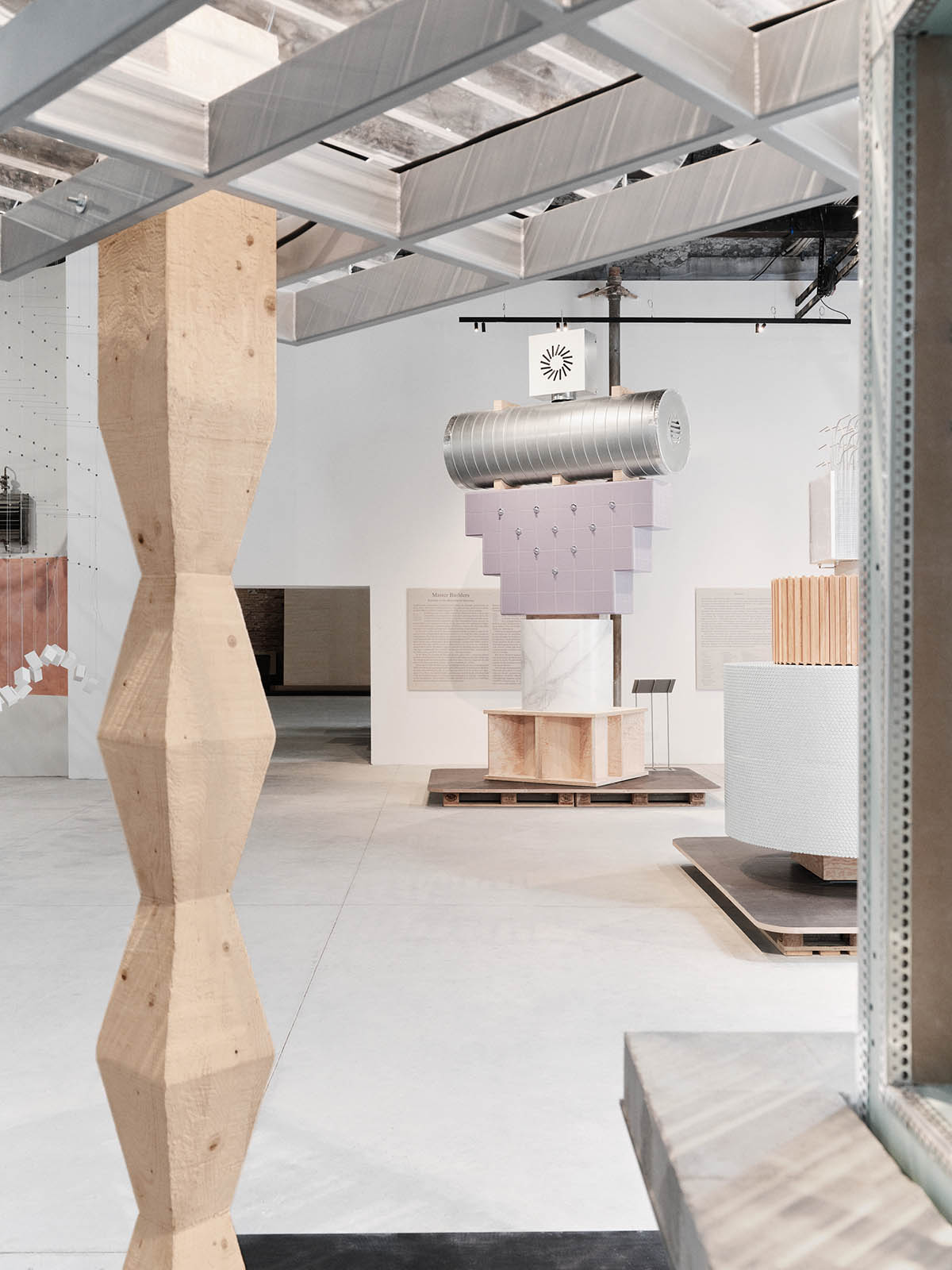
Master Builders, Photography © Klemen Ilovar, 2025
Therefore, a craftsman's tacit knowledge or tacit intelligence on a building site is a particular combination of their hand or full body's actual movement and their concurrent thought on their work. Because it is ingrained in a craftsman's physical body via experience, this information becomes more subconscious, which is why it is frequently referred to as a "feeling."
According to Richard Sennett's book The Craftsman, a craftsman always examines inputs like talent, dedication, and judgment in a specific manner. This combination of mental and physical skills functions best when it demonstrates how difficulties are solved and how something is done in a creative and realistic way.
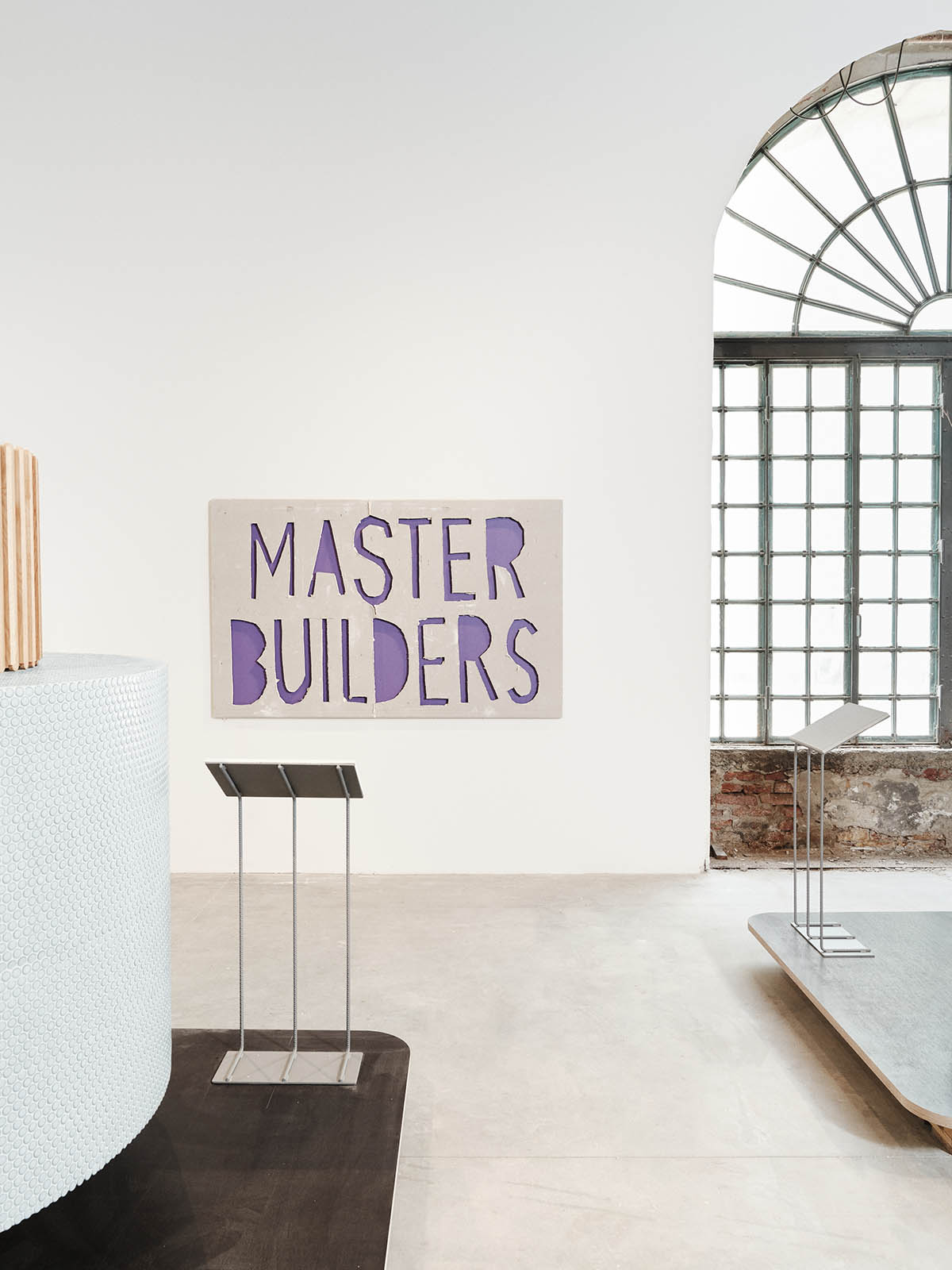
Master Builders, Photography © Klemen Ilovar, 2025
For instance, master builders strive to produce something substantial, palpable, current, something they can relate to, and something they claim as their own. Certain human traits that 3D printers, robots, and computers lack include identification with the product of construction, a skillful attitude toward work, and autonomous problem solving. And the progress of architecture and building is turning out to be largely dependent on this independent, imaginative human element.

Master Builders, Photography © Klemen Ilovar, 2025
The authors of the Slovenian pavilion reposition the role of construction workers in the architecture-making process by highlighting the knowledge, techniques, and skills of craftsmen as an essential and irreplaceable part of architectural production within the framework of this year's Biennale theme, Intelligens. Natural. Artificial. Collective.
Here, we examine modern architecture by focusing on current methods of production, such as construction on the building site, rather than finished architectural items. Whether this change in focus may lead to a fresh perspective on modern architecture is the question.
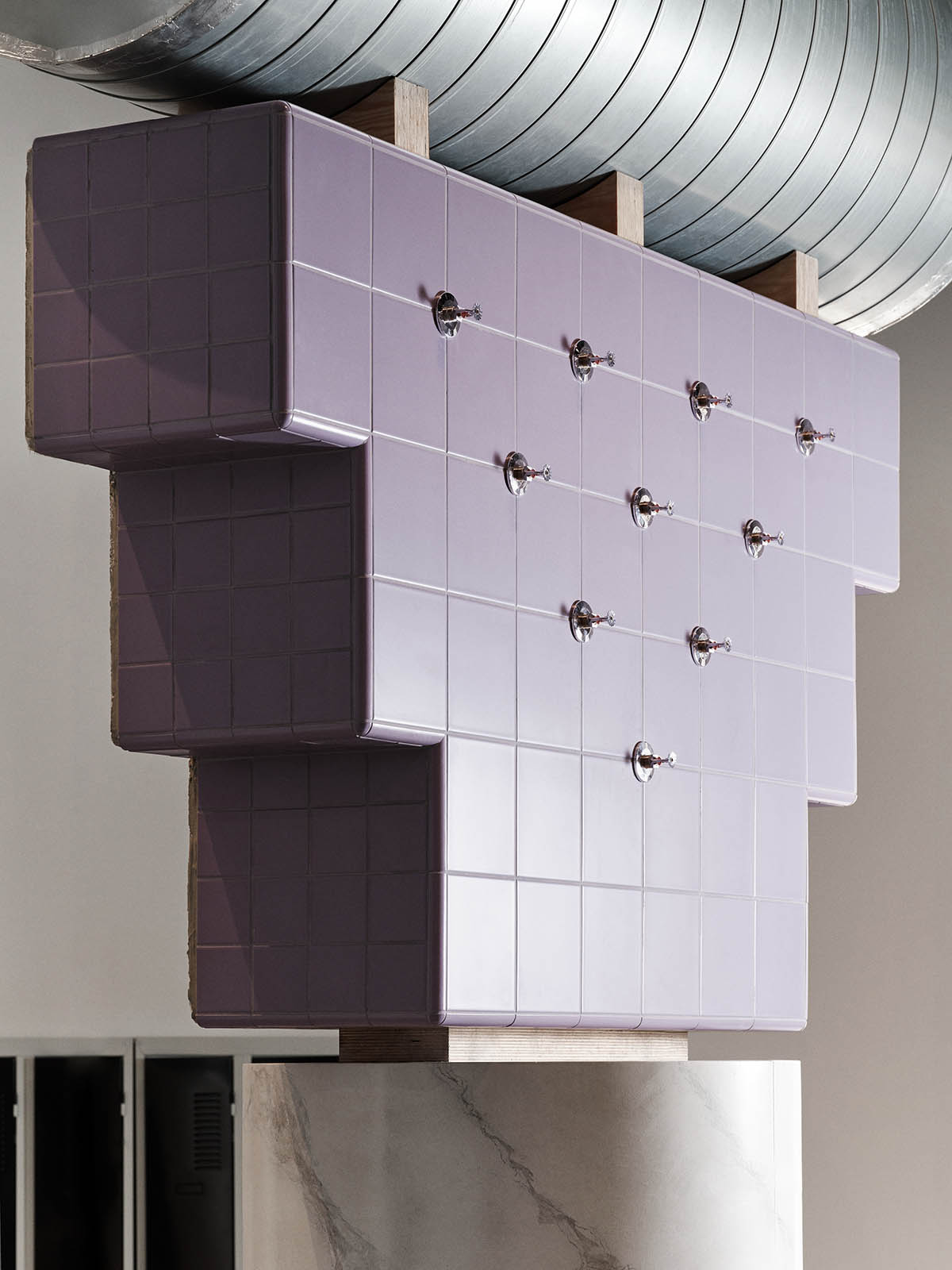
Master Builders, Photography © Klemen Ilovar, 2025
"This year, the Slovenian pavilion reflects on our on-site experience. KIP (Kosi and Partners) is an architectural design studio, and when our projects go to the construction site so do we. We are on site every day, and our experience has shown that the quality and development of architecture depend on the presence of experienced craftspeople on the site," said Ana Kosi, curator and architect.
"At the time, when skilled craftsmen are denied their worth and place in architecture, the Slovenian pavilion calls for a different perspective. We believe that the work of master builders should be recognized as the key intelligence component in the construction process," Kosi added.
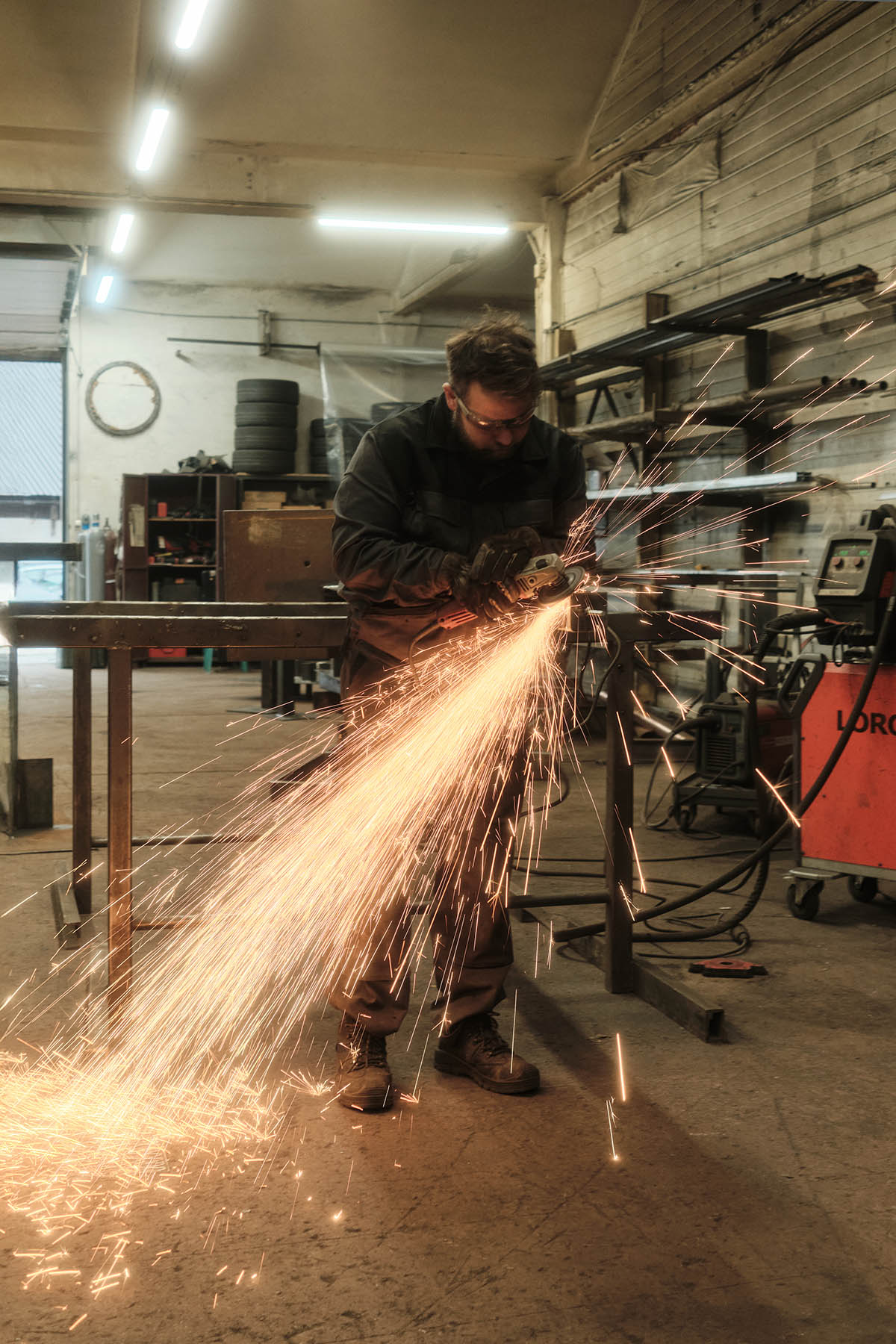
Photography © Klemen Ilovar and Matic Pandel, 2025
"For architecture to be well-constructed we need a good team of architects and designers, a good investor, a contract with a good construction company, an experienced on-site supervisor, political backing, a cycle of favorable construction material prices, and favorable financing terms," said Ognen Arsov, curator and architect.
"This general formula is missing a key component and one that is frequently overlooked when it comes to sharing the credit for well-built architecture – the skilled craftsmen who build structures with their particular know-how, good will, and well-trained hands," Arsov added.
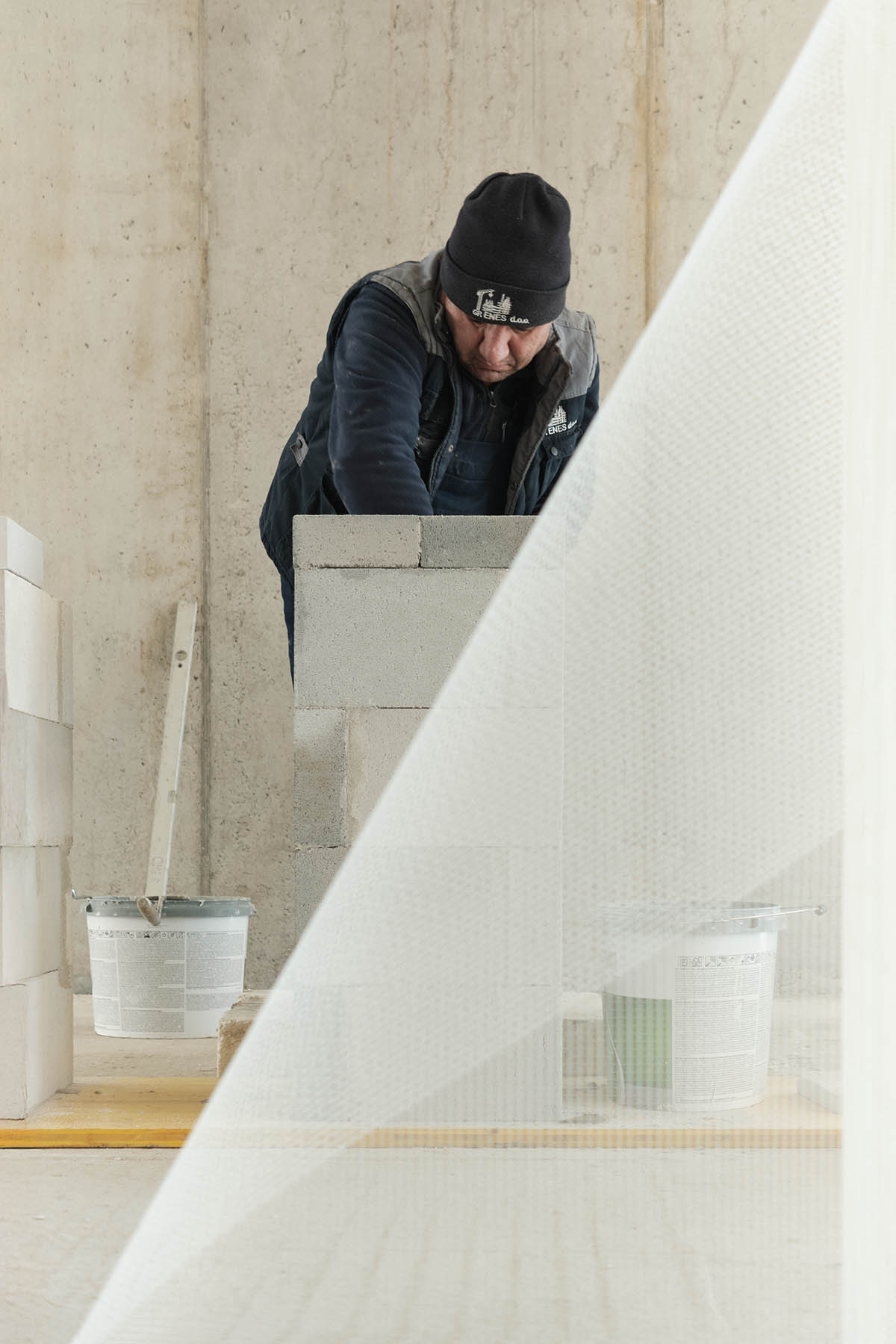
Master Builders, Photography © Klemen Ilovar and Matic Pandel, Graphic Design: Studio Nejc Prah, 2025
Four totems that symbolize a family of skilled artisans from the building site are on display in the Slovenian pavilion at the Arsenale, along with a large-format documentary film that details their creation. A totem is a spirit entity, artifact, or symbol that represents a tribe, clan, or group. The totems are built and performed as a tangible statement of artistry.
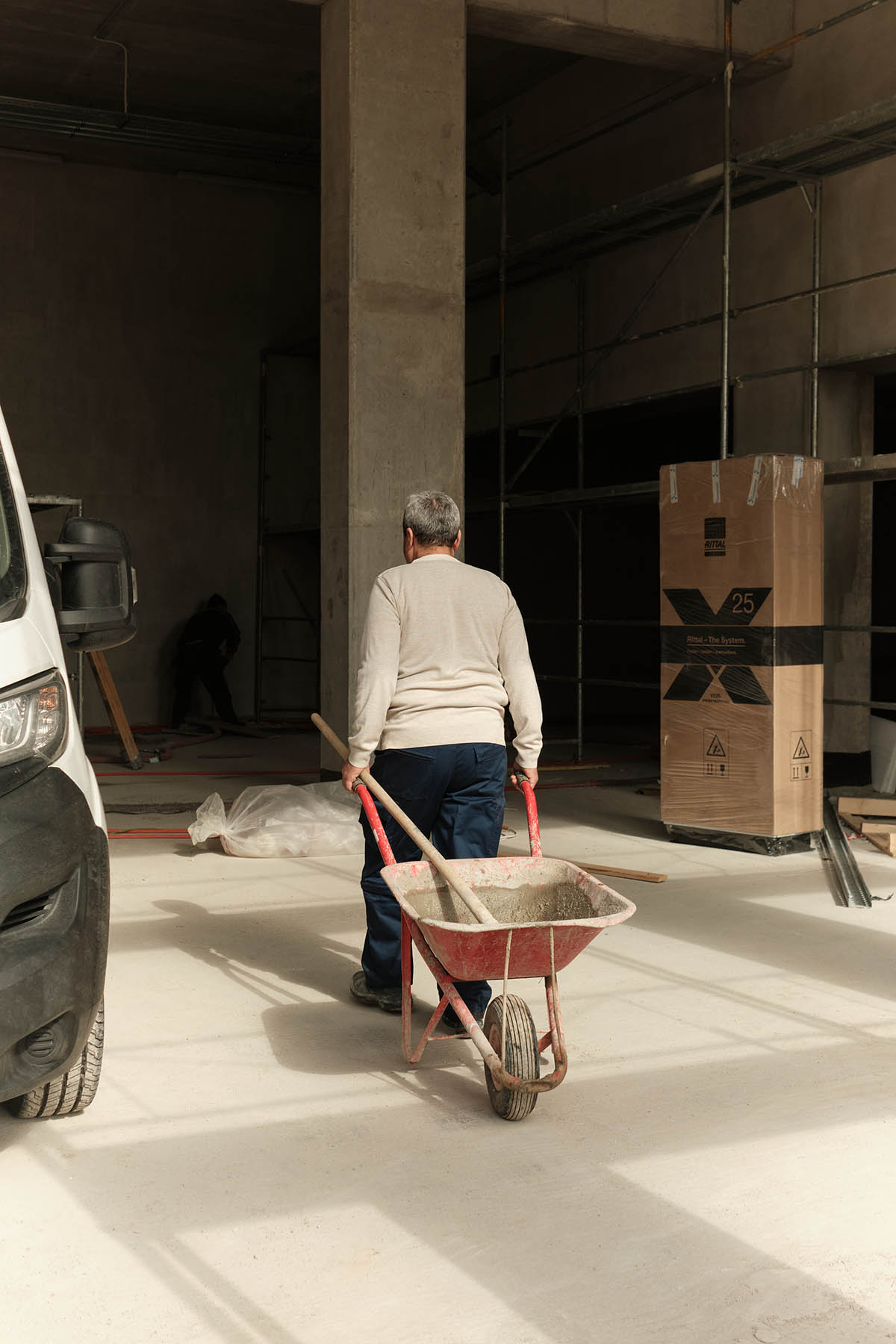
Master Builders, Photography © Klemen Ilovar and Matic Pandel, 2025
The proposal for the Slovenian pavilion is the outcome of an experimental approach that looks at the connection between architecture, craftsmen, and architects. Standard techniques and instruments used in architectural planning are applied in the creation of the totems.
The totems were built on a building site in Kranj, about 35 kilometers north of the capital Ljubljana, and its component parts were created using the same manufacturing and construction methods currently employed in Slovenia. In close coordination between the architects and the master craftsmen on the job site, the totems were constructed using the submitted designs, the bill of goods, and the technical report.
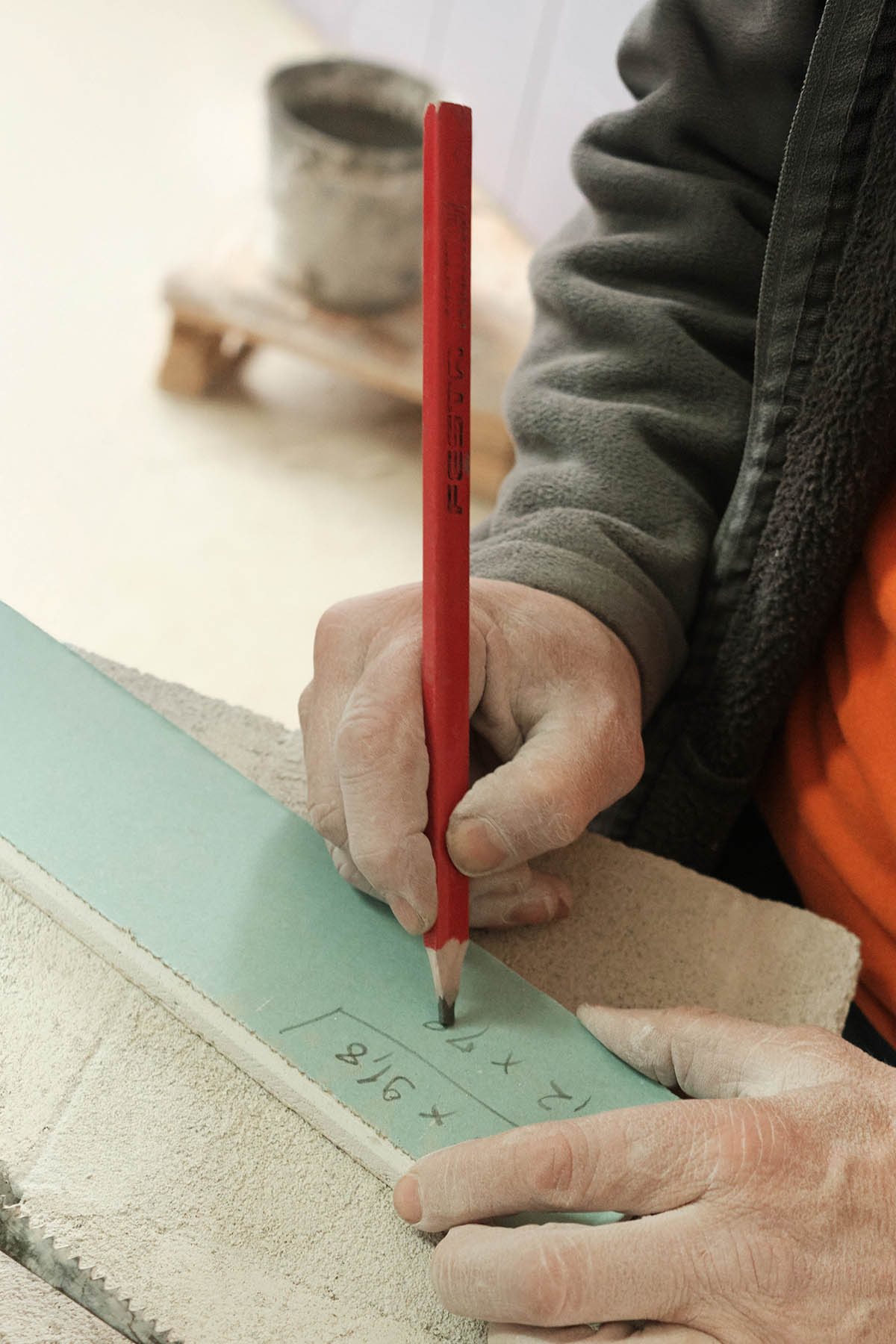
Master Builders, Photography © Klemen Ilovar and Matic Pandel, 2025
In addition to responding to the specific exhibition space, the totems' placement in the Arsenal fosters interaction between them. The totems, which display specific abilities and methods, represent the transfer of artisans' knowledge from the intangible and abstract to the tangible and concrete, creating room for their reflection in the larger architectural conversation.
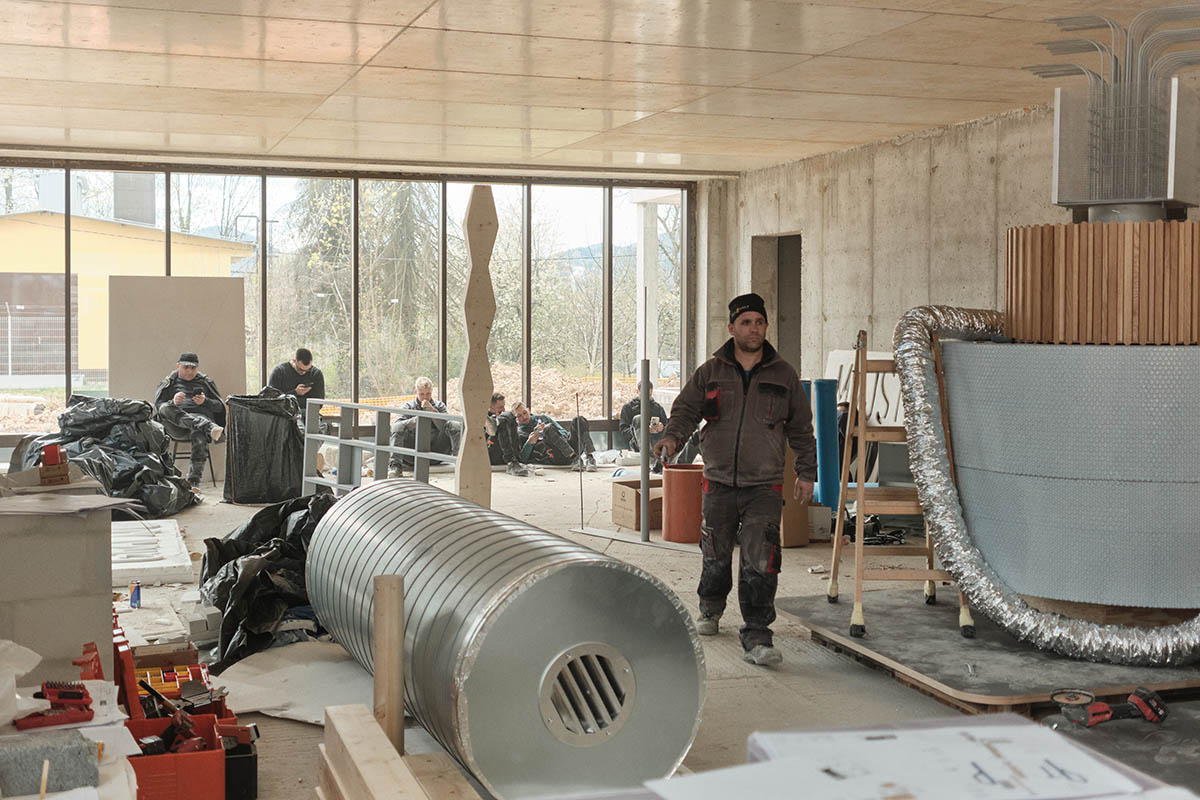
Master Builders, Photography © Klemen Ilovar and Matic Pandel, 2025
In addition to serving as representations of specific persons, the totems in the pavilion also function as a symbol or signifier of mastery that transcends individuals, making them susceptible to new associations, interpretations, and stories.
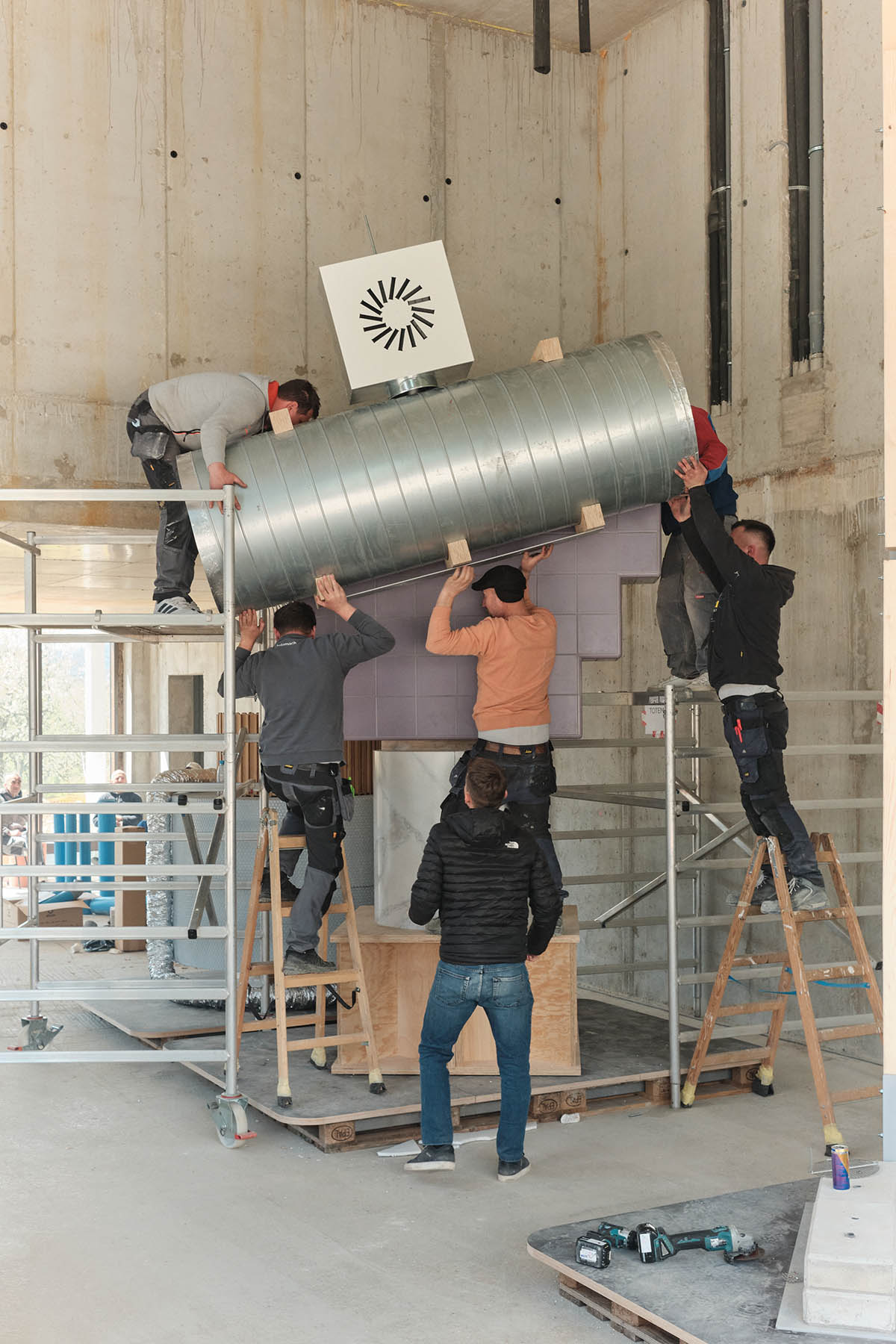
Master Builders, Photography © Klemen Ilovar and Matic Pandel, 2025
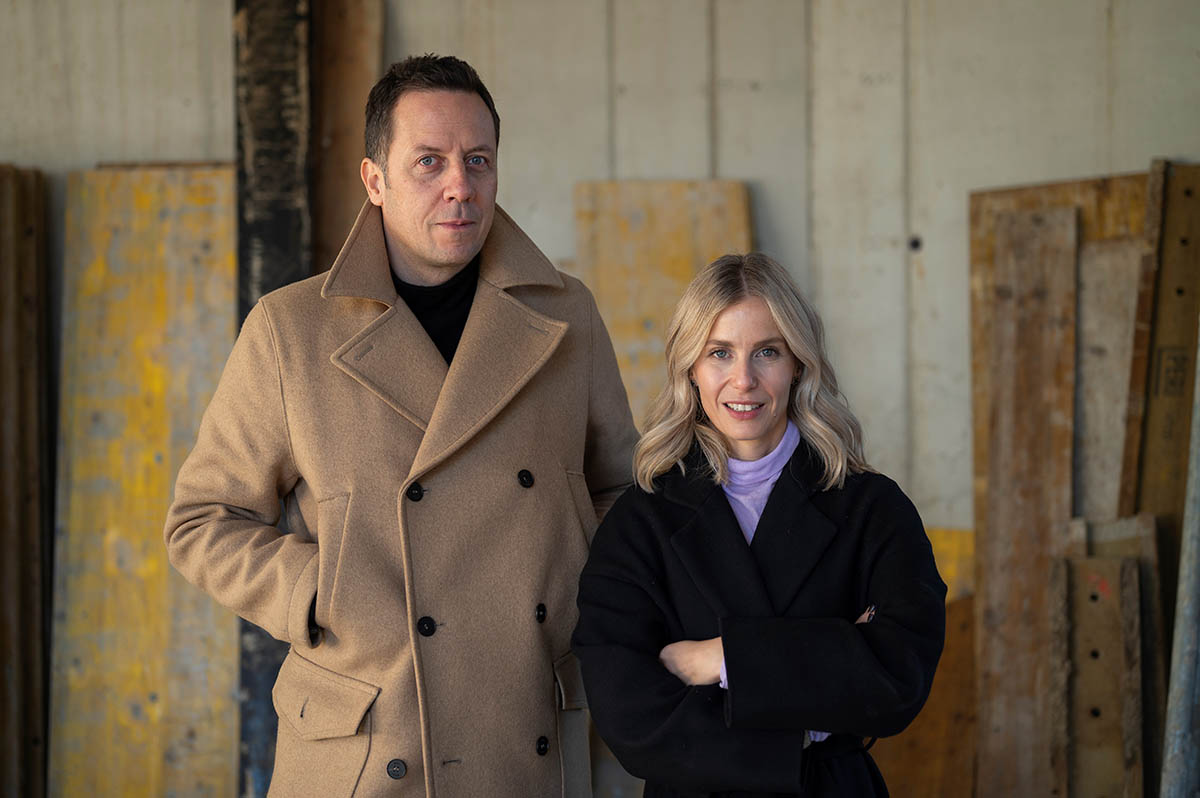
Ana Kosi in Ognen Arsov, Photography © Nik Neubauer, 2025
The 19th International Architecture Exhibition takes place from 10 May to 23 November 2025 at the Giardini, the Arsenale and various venues in Venice, Italy.
Find out all exhibition news on WAC's Venice Architecture Biennale page.
Project facts
Curators: Ana Kosi, Ognen Arsov
Commissioner: Maja Vardjan
Assistant to the Commissioner: Nikola Pongrac
Assistant Curators: Žiga Rošer, Blaž Šenica
Project Team: Valentina Tina Božak, Teodora Petrushevikj, Jakob Marčič, Urša Koželj, Nik Štrubelj
Graphic Design: Studio Nejc Prah
Expert Advisors: Boštjan Vuga, Jeff Bickert
Video: Rok Kajzer Nagode – video director and DOP, Dominik Mencej – editor, Andraž Žigart – additional footage
Video Production: Kolektiv 96
Coordinator in Venice: Eiletz | Ortigas Architects
Public Relations: Manca Košir
Marketing: Ana Kandare
Producer: Muzej za arhitekturo in oblikovanje (MAO)
Catalogue
Publisher: Museum of Architecture and Design (MAO)
For the Publisher: Maja Vardjan, director
Editors: Ana Kosi, Ognen Arsov
Executive Editors: Ajda Bračič, Blaž Šenica
Texts: Ana Kosi, Ognen Arsov, Maja Vardjan, Blaž Šenica, Ana Svetel
Craftsmen: Aleš (roofer), Damian (assembler), Elfim (mason), Fadil (drywall installer), Gašper (tinsmith), Gojko (mechanical installations installer), Jernej (drywall installer), Klemen (installer), Kristjan (ceramic tile layer), Matjaž (decorative plasterer), Mitja (ceramic tile layer), Neim (mason), Omer (mason), Rene (carpenter), Rok (carpenter), Sašo (carpenter), Zoki (drywall installer)
Graphic Design: Studio Nejc Prah
Slovene Proofreading: Katja Paladin
Translations into English: Andreja Šalamon Verbič
Copy Editing, English: Jeff Bickert
Printed by: Collegium Graphicum
The top image in the article: Master Builders, Photography © Klemen Ilovar, 2025.
> via Slovenian Pavilion
